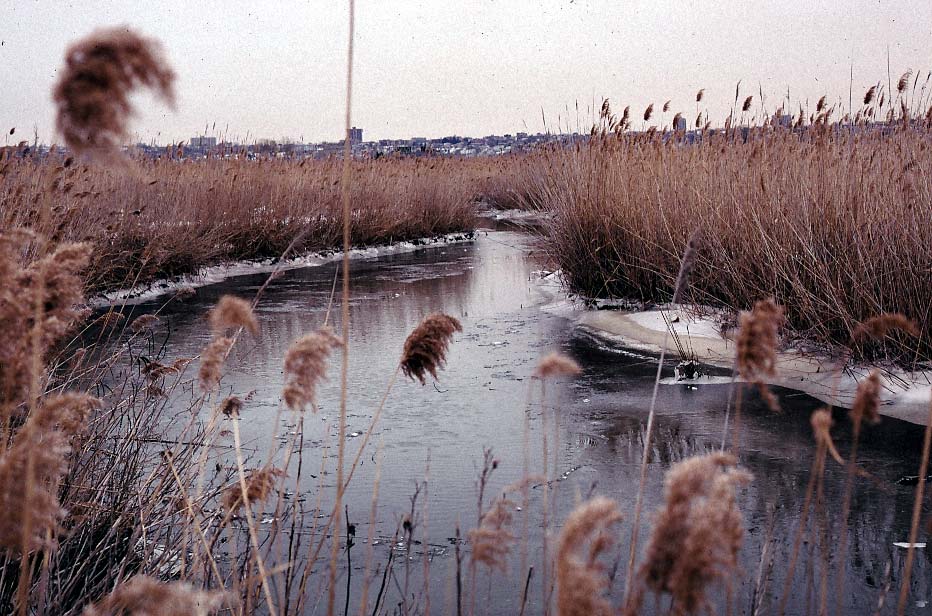 Abstract: Phragmites australis (common reed) is widespread in North America, with native and nonnative haplotypes. Many ecologists and wetland managers have considered P. australis a weed with little value to the native biota or human society. I document important ecosystem services of Phragmites including support for many common and rare species of plants and animals. This paper is based on an extensive review of the ecology and natural history literature, discussions with field workers, and observations in 13 U.S. states and one Canadian province during the past 40 years. Phragmites sequesters nutrients, heavy metals, and carbon, builds and stabilizes soils, and creates self-maintaining vegetation in urban and industrial areas where many plants do not thrive. These non-habitat ecosystem services are proportional to biomass and productivity. Phragmites was widely used by Native Americans for many purposes; the most important current direct use is for treatment of wastes. Most knowledge of non-habitat ecosystem services is based on studies of Phragmites australis haplotype M (an Old World haplotype). Phragmites also has habitat functions for many organisms. These functions depend on characteristics of the landscape, habitat, Phragmites stand, species using Phragmites, and life history element. The functions that Phragmites provides for many species are optimal at lower levels of Phragmites biomass and extent of stands. Old World Phragmites, contrary to many published statements, as well as North American native Phragmites, provide valuable ecosystem services including products for human use andhabitat functions for other organisms. Phragmites stands may need management (e.g., thinning, fragmentation, containment, or removal) to create or maintain suitable habitat for desired species of animals and plants. [Erik Kiviat (2013). Ecosystem services of Phragmites in North America with emphasis on habitat functions. AoB Plants, on-line 18 Feb 2013.] [Photo: Creek bordered by common reed (Phragmites australis), Empire Tract, Hackensack Meadowlands, New Jersey. Creeks like this are used by ducks in bad weather, muskrat, dragonflies, and several species of fishes. Photograph by Erik Kiviat.] ${imageDescription} Comment
Abstract: Phragmites australis (common reed) is widespread in North America, with native and nonnative haplotypes. Many ecologists and wetland managers have considered P. australis a weed with little value to the native biota or human society. I document important ecosystem services of Phragmites including support for many common and rare species of plants and animals. This paper is based on an extensive review of the ecology and natural history literature, discussions with field workers, and observations in 13 U.S. states and one Canadian province during the past 40 years. Phragmites sequesters nutrients, heavy metals, and carbon, builds and stabilizes soils, and creates self-maintaining vegetation in urban and industrial areas where many plants do not thrive. These non-habitat ecosystem services are proportional to biomass and productivity. Phragmites was widely used by Native Americans for many purposes; the most important current direct use is for treatment of wastes. Most knowledge of non-habitat ecosystem services is based on studies of Phragmites australis haplotype M (an Old World haplotype). Phragmites also has habitat functions for many organisms. These functions depend on characteristics of the landscape, habitat, Phragmites stand, species using Phragmites, and life history element. The functions that Phragmites provides for many species are optimal at lower levels of Phragmites biomass and extent of stands. Old World Phragmites, contrary to many published statements, as well as North American native Phragmites, provide valuable ecosystem services including products for human use andhabitat functions for other organisms. Phragmites stands may need management (e.g., thinning, fragmentation, containment, or removal) to create or maintain suitable habitat for desired species of animals and plants. [Erik Kiviat (2013). Ecosystem services of Phragmites in North America with emphasis on habitat functions. AoB Plants, on-line 18 Feb 2013.] [Photo: Creek bordered by common reed (Phragmites australis), Empire Tract, Hackensack Meadowlands, New Jersey. Creeks like this are used by ducks in bad weather, muskrat, dragonflies, and several species of fishes. Photograph by Erik Kiviat.] ${imageDescription} Comment